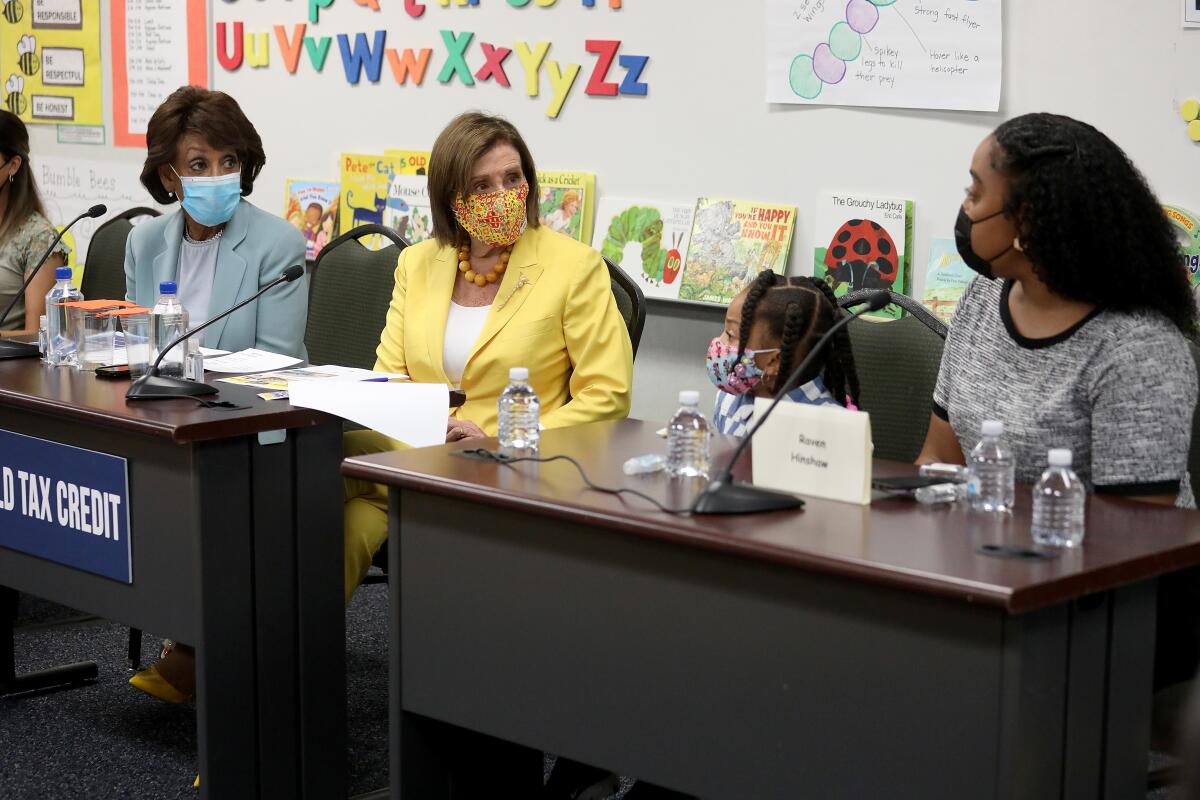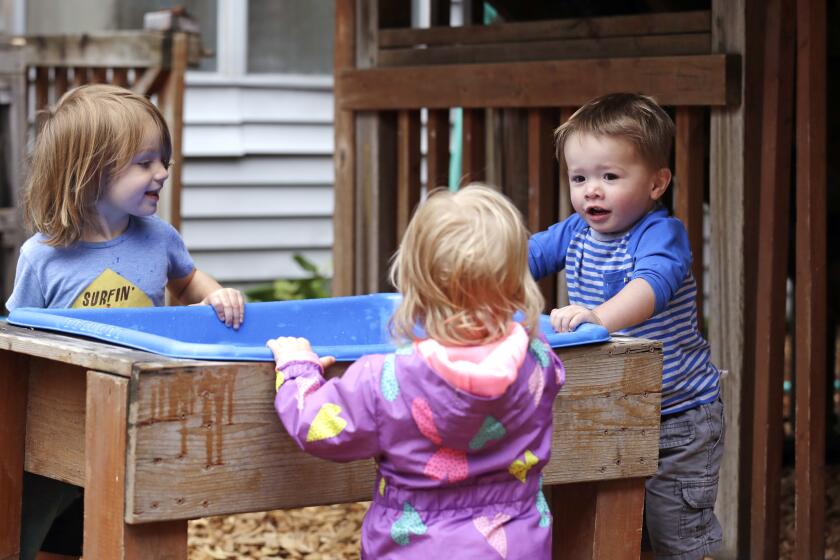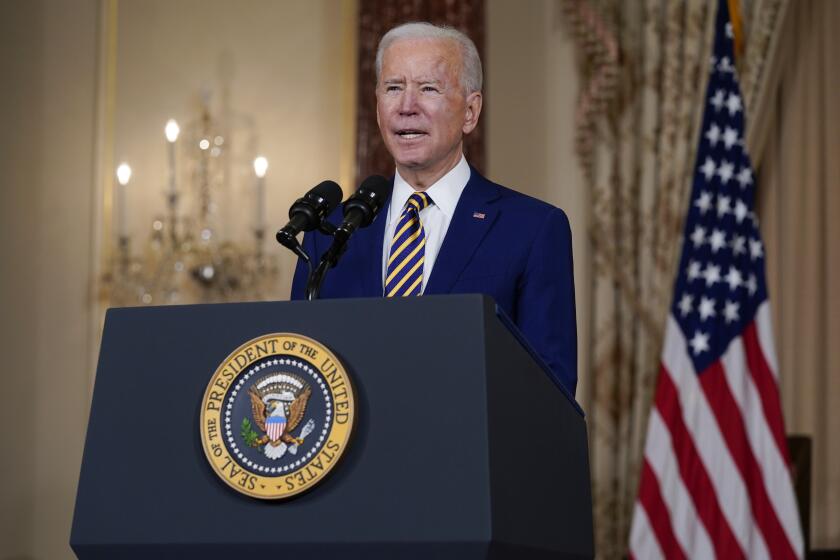Editorial: The U.S. cannot afford to be stingy with parents. Revive the expanded child tax credit

- Share via
Child poverty is bad for the United States. And we’re paying a terrible social and economic cost for allowing it to continue.
Children who grow up in poor families are more likely to struggle in school, suffer from stress and have poor health, compared with children in families living well above the poverty line. A growing body of research has found that adults who grew up very poor tend to have lower earnings, a heavier reliance on public assistance, have more health problems and are more likely to become entangled in the criminal justice system.
A landmark National Academy of Sciences report in 2019 estimated that childhood poverty costs the U.S. between $800 billion and $1.1 trillion a year through reduced adult productivity, increased costs of crime and health expenditures. The U.S. has one of the highest rates of child poverty among industrialized countries, and poverty here is disproportionately high among children of color, furthering systemic inequities.
Biden wants more for families — more preschool, child care, college, family leave. The plan’s chances may not be great, but it’s what the U.S. needs.
So it’s deeply frustrating that one of the nation’s most potentially powerful tools to reduce childhood poverty — the expanded federal child tax credit — was allowed to expire this month without so much as a vote in the U.S. Senate.
From July through December, approximately 36 million households with more than 61 million children received monthly payments of up to $300 per child from the federal government. The longtime tax benefit that was increased and broadened for one year under President Biden’s $1.9-trillion American Rescue Plan passed last March.
The president and many Democratic lawmakers intended to extend the more generous child tax credit for several more years and make certain provisions permanent through the “Build Back Better” bill. That hope was dashed — perhaps temporarily — last month when Democratic Sen. Joe Manchin III of West Virginia, whose vote was crucial to passage, announced he would not support the bill. Manchin cited the cost and details of the child tax credit as one of his concerns.
Fine, debate the details. Even the outspoken supporters of the child tax credit have recommended changes to make the expanded version more sustainable. But abandoning this transformational expansion of the child tax credit would be a terrible mistake and set back efforts to lift the next generation out of poverty.
House Democrats are taking a big swing at child poverty in their COVID-19 relief bill. But one year of extra payments isn’t much of a fix.
The child tax credit was adopted in 1997 as a middle-class tax cut. Over time and with bipartisan support, the value of the credit has increased along with who was eligible to receive it. As part of President Trump’s 2017 tax bill, Congress doubled the value of the credit, but the poorest families got nothing or only a partial credit because they didn’t earn enough to qualify for the full amount.
The American Rescue Plan increased the credit to a maximum of $3,000 for children 6-17 and $3,500 for children under 6, half paid in monthly installments and the other half at tax time.
And, most importantly, it made the maximum payment available to families who earned little or no income, transforming the child tax credit into a powerful anti-poverty program.
And it worked.
By November, the tax credit kept 3.8 million children from poverty, according to the Center on Poverty and Social Policy at Columbia University, reducing the monthly child poverty rate by 29.4%.
During the six months of payments, researchers found that low-income families had higher checking account balances. As soon as the payments went out, there was a marked reduction in food insufficiency rates among low-income families.
Three out of four families spent the initial payments mostly on food, bills, clothing, housing, school and child care rather than save the money. Among families receiving food stamps, three-quarters said they used the child tax credit to pay overdue utility bills or prevent eviction or foreclosure. These are families living in constant stress, month to month, to keep a roof over their heads and the power on.
By the middle of the fall, nearly 70% of families earning $75,000 or less reported that the monthly payments “made them a lot or a little less stressed about money.”
And so far, researchers have seen no evidence that the monthly payments caused parents to stop working, which is opponents’ primary criticism of expanding the credit to poor families. Indeed, Manchin and GOP lawmakers have pushed for work requirements as a condition of the child tax credit.
What’s frustrating is that skeptics care more about the theoretical possibility that a small number of people will choose not to work as a result of the child tax credit payments rather than the proven reduction in child poverty and hunger during six months of payments.
Most other wealthy industrialized countries provide a child allowance to families as a recognition that raising kids is expensive and there is a larger societal benefit to having healthy and well-cared-for children. Unlike the U.S., most countries ensure the poorest families get the maximum benefit because they need help the most. It’s time for this country to value and support families across the income spectrum by reviving the expanded child tax credit and making it permanent.
More to Read
A cure for the common opinion
Get thought-provoking perspectives with our weekly newsletter.
You may occasionally receive promotional content from the Los Angeles Times.












